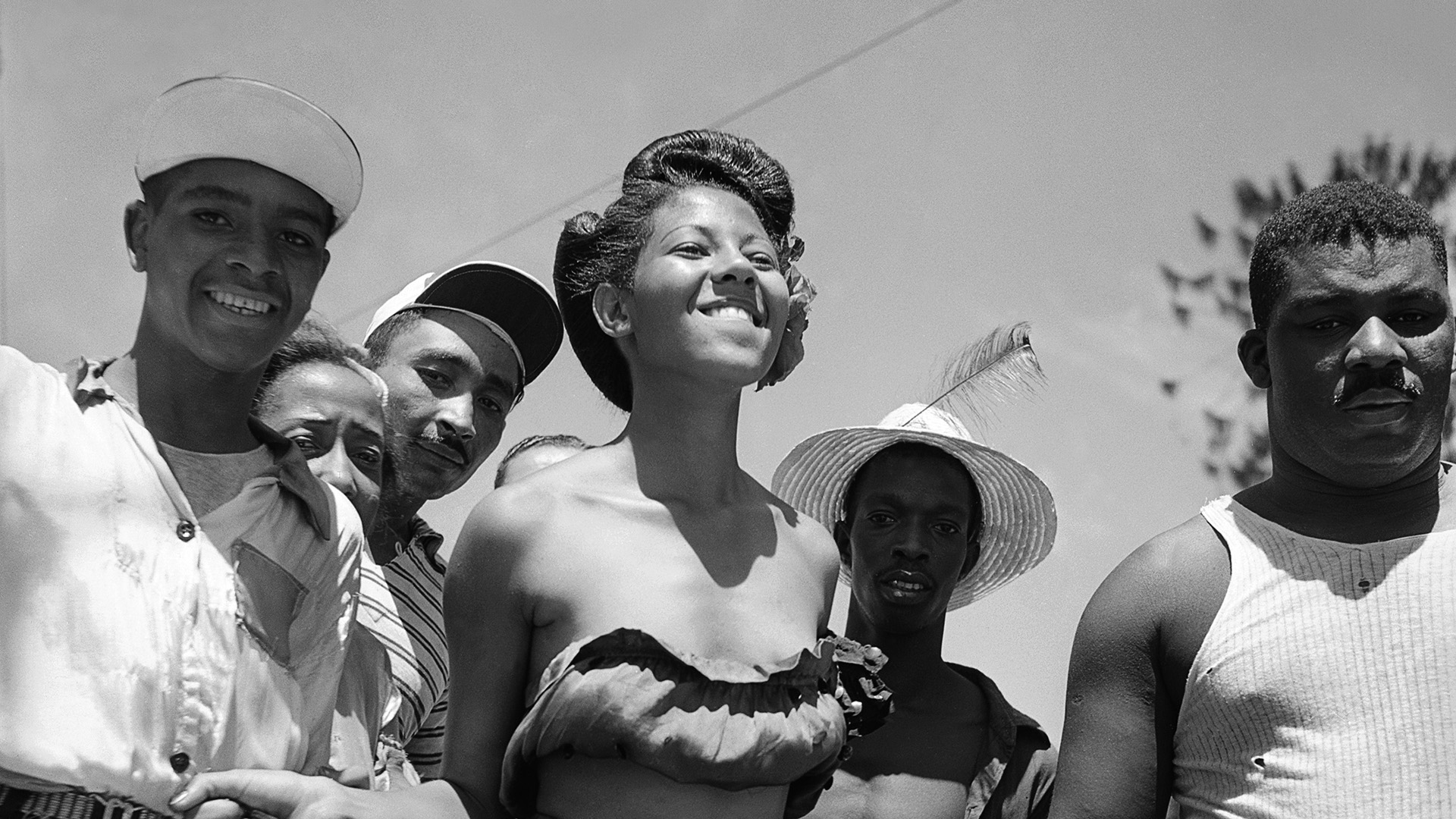
Carnaval de rua, homens fantasiados de mulher, circa 1951 © Marcel Gautherot/ Acervo Instituto Moreira Salles
Before it became the tourist phenomenon it is today, the Rio Carnival was above all a cultural tradition and four-day celebration of the arts of samba and cross-dressing. Dancers, musicians, notables, workers, or simple passers-by: the whole city transformed itself to the transcendent beat of the drums, and with it so did the hearts of its people.
It was a celebration that fascinated French photographer Marcel Gautherot, who discovered this colorful country in his thirties, at the turn of the 1940s, and went on to document all aspects of it: the new capital Brasilia transformed under the hands of architect Oscar Niemeyer, the tribes of the Amazon and the many customs that make up Brazil’s rich cultural landscape.

Integrantes do cordão Filhos do Morro no carnaval, circa 1964 © Marcel Gautherot/ Acervo Instituto Moreira Salles
Samba
“He was one of those who dove into the carnival theme, photographing this popular festival for years,” said Sergio Burgi, photography coordinator at the Moreira Salles Institute in Rio, where the photographer’s archives are kept. “But he mostly focused on the samba schools,” he added. His images are filled with musicians parading past, dressed in the colors and patterns of their school, some faces expressing concentration, others intoxication. And each neighborhood had its own school: Portela, Beija-Flor, Mangueira, etc.
In his black and white photographs, the whiteness of the costumes contrasts with the dark skin wearing them, a reminder of the origins of samba, which was invented by the community of former slaves from Africa that settled in Rio at the beginning of the 20th century, shortly after being freed.

Afoxé Filhos de Gandhi no carnaval, circa 1964 © Marcel Gautherot/ Acervo Instituto Moreira Salles
Being someone else
But more than anything else, carnival is the chance for people to forget who they are, where they come from, what they live every day. Men become women, women transform into princesses and princesses turn into creatures with feathers, bones and glitter, once again recalling the African origins of this cathartic celebration.
Just like in this picture, where, for the space of one day, this modest young couple can wear the elegant costumes of a king and a queen and dream of another life. It’s Carnival, anything goes.

Integrantes do cordão Filhos do Morro no carnaval, circa 1964 © Marcel Gautherot/ Acervo Instituto Moreira Salles

Bonde no carnaval lotado de foliões, circa 1951 © Marcel Gautherot/ Acervo Instituto Moreira Salles

Carnaval, 1954 © Marcel Gautherot/ Acervo Instituto Moreira Salles

Afoxé Filhos de Gandhi no carnaval, circa 1964 © Marcel Gautherot/ Acervo Instituto Moreira Salles

Carnaval de rua, circa 1954 © Marcel Gautherot/ Acervo Instituto Moreira Salles
By Coline Olsina


